
Pterygophora californica
Walking Kelp, Old-growth Kelp, Woody-stemmed Kelp
27 May 2021
Fishboat Bay, Juan de Fuca Strait.
Tide: -0.7 foot tide at 10:18am PDT (measured at Sheringham Point Tidal Station)
Conditions: Calm winds, overcast, some precipitation, 11˚C.
Phase of Moon: Waning Gibbous (approx. 30 hours into this phase at time of collection); (Previous Phase, Full Moon, 26 May 2021 at 4:13am PDT: Next Phase, Third Quarter, 2 June 2021 at 12:24am PDT.)
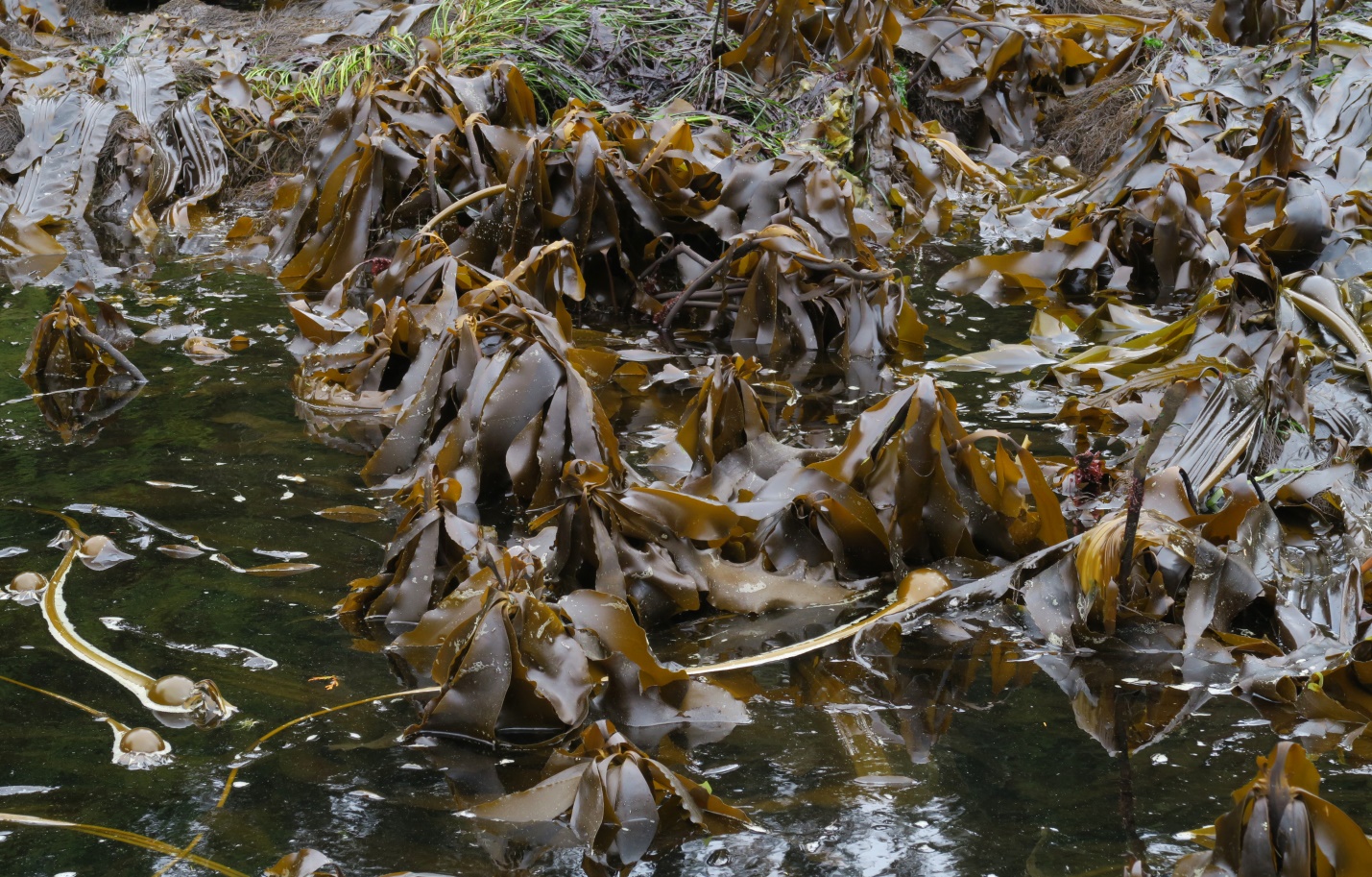
Figure 1: A group of Walking Kelp have been all clustered in a channel – concentrated and moved here by the wave action of a strong spring storm. Such forces lift the “sail” of the kelp blades and this is powerful enough to move some fairly heavy cobblestones that the Pterygophora californica anchors to. Botany Bay, Juan de Fuca Strait, B.C., Canada. May 28, 2021. Photo ID 27529 ©Seaweedwhisperings.com
Person 1:
Snorkel or periscope.
Mostly unseen, but occasionally raises its head.
Not sure of its direction in life.
“Walks” but doesn’t have a say as to the direction.
Can adapt to its new home.
(Note: Person 2 did not interact with this seaweed on this day)
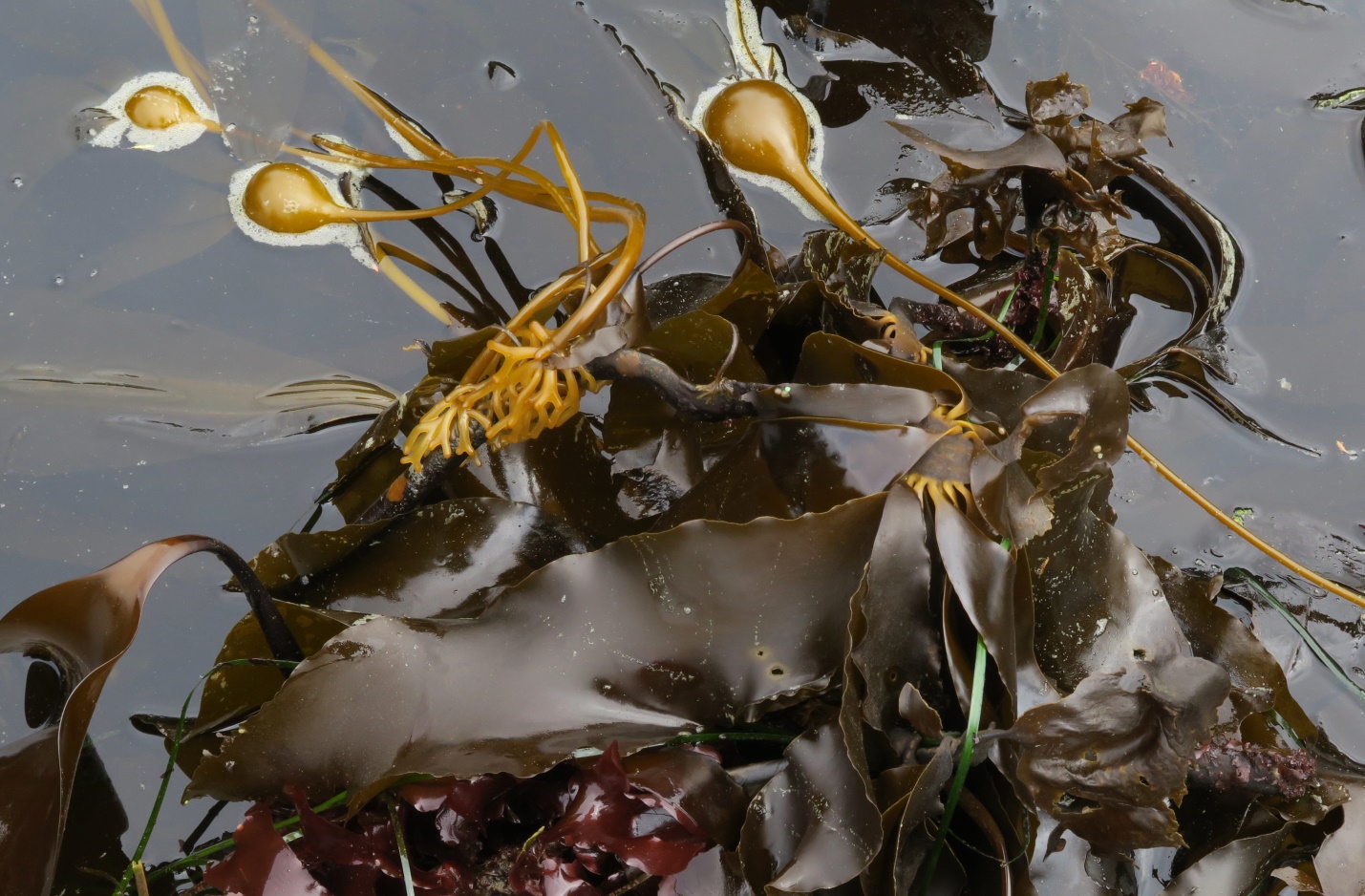
Figure 2: Look closely at the concentration of yellow-brown Bull Kelp holdfasts and you will see that they are growing from the woody stipe of a Pterygophora californica seaweed. A few broad sporophyll blades are seen too as they are growing from the rather bent stipe of this Walking Kelp individual. Some of the “frilly red” seaweed that is visible in this picture is growing from the stipes of other Walking Kelp individuals. Botany Bay, Juan de Fuca Strait, B.C., Canada. May 28, 2021. Photo ID 27530 ©Seaweedwhisperings.com
28 May 2021
Botany Bay, Juan de Fuca Strait
Tide: 0.0 foot tide 09:23am PDT (measured at Port Renfrew Tidal station); -0.7 foot tide 10:18am PDT (measured at Sheringham Point Tidal Station)
Conditions: Wind, SW 20 – 30 km per hour, moderate southwesterly swell, overcast, no precipitation, 11˚C.
Phase of Moon: Waning Gibbous (approx. 54 hours into this phase at time of collection); (Previous Phase, Full Moon, 26 May 2021 at 4:13am PDT: Next Phase, Third Quarter, 2 June 2021 at 12:24am PDT.)
Person 1:
Home for many other seaweeds.
Accepts them without outward judgment, but has strong opinions kept secret.
Almost always looks old and weathered.
Wise and experienced through life’s challenges.
Stories to tell.
Broad, flat head (paddle shaped) where the blades arise.
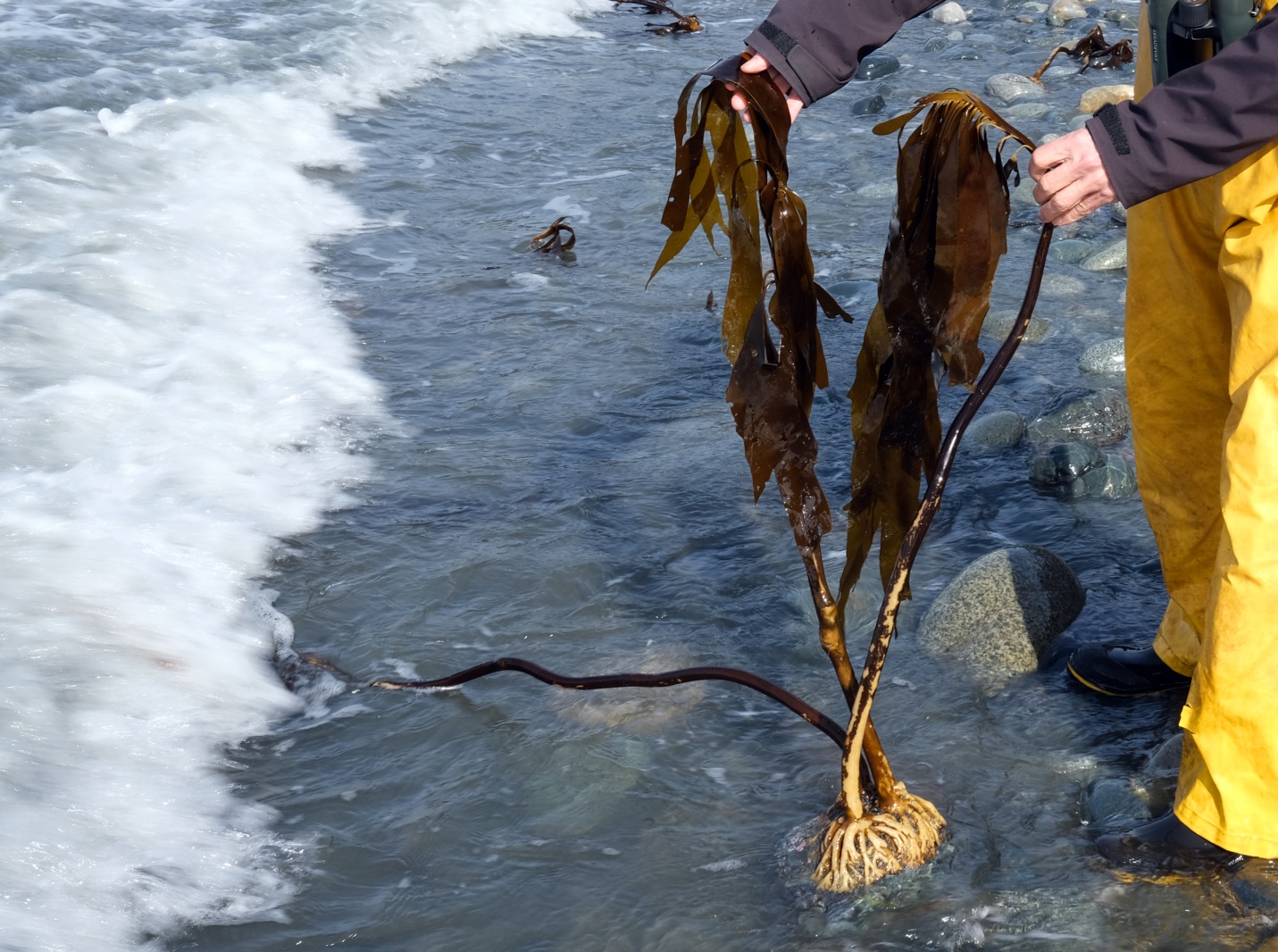
Figure 3: Newly “walked” ashore, this cluster of three Walking Kelp are held upright to show their relative size and the color of their blades. Other individuals can be seen in the background; they, too, have been washed ashore into the intertidal zone and away from their subtidal habitat. French Beach, Juan de Fuca Strait, B.C., Canada. April 6, 2022. Photo ID 27531 ©Seaweedwhisperings.com
Person 2:
Rather ugly stipe, juts out of the water, and flattens at the end. Here your blades grow, originating neatly from each side but after that, all neatness ends! The blades wave and ruffle a bit and swirl out in the sea around each other.
In many of you, your stipe is the home or anchor point for other life – frilly red seaweeds, feathery tunicates, even bull kelp (with their holdfasts growing on your strong stipe)!
You endure – like a part of the landscape such as the pilings of a wharf, and other life takes advantage of your perennial presence.
You support whole communities of life with your long-lived nature.
I think you’re good with that – you even see it as part of your life purpose.
You’re not very attractive but that’s OK to you – your body serves you in getting the job done well and you don’t give a thought to how you look.
A group of you here are congregated closely and in the shallows of this channeled bay – you got “walked” in here and so here you’ll continue thrive as best you can. Or, you’ll die trying.
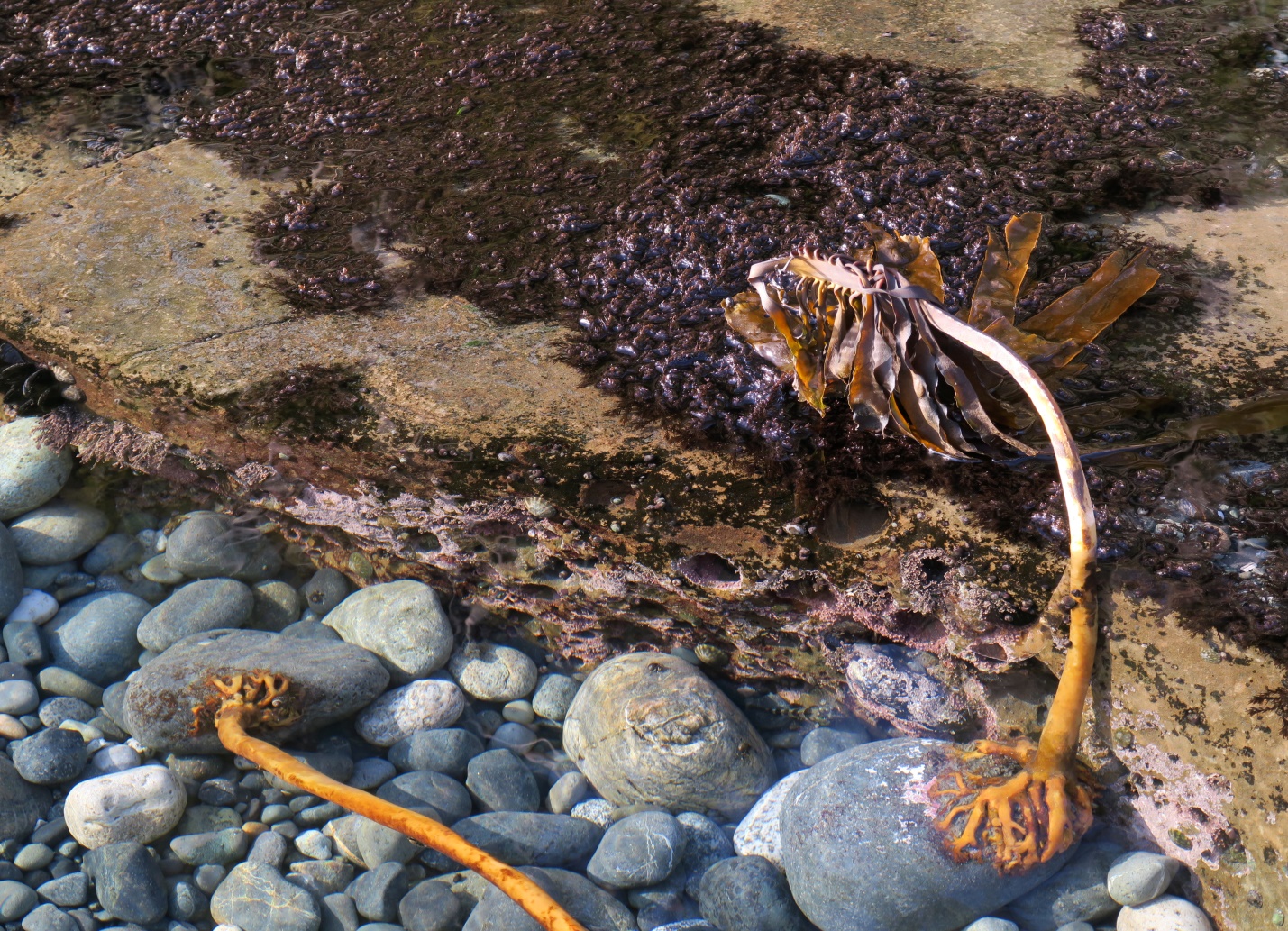
Figure 4: Washed ashore in a heavy winter storm, the ‘sail’ of these Walking Kelp “walked” them to the shallow intertidal zone where they will perish. The translucent coloration of the blades/sporophylls indicates decay. The holdfasts are obvious and illustrate the “old growth” quality that contributed to one of this seaweed’s common names. French Beach, Juan de Fuca Strait, B.C., Canada. March 8, 2021. Photo ID 27532 ©Seaweedwhisperings.com
Discussion:
One day, in early March of this year, we encountered at French Beach hundreds of Pterygophora californica stranded on the beach; they were washed ashore by a recent storm and high winds.
Lifted entire and walked away from their preferred environment, seeing so many of these seaweeds splayed on the beach was unforgettable. The feeling was, “Oh my, such a disaster. What a tremendous loss.” There was so much ‘carnage’ that it seemed like a whole generation had been cut down.
Of course life and death is a cycle in nature that no species escapes, but with the recognition of all the other life forms that live ‘on’ this kelp, too – knowing that they perished along with previously strong and sturdy host – it added to the sense of loss.
It seems that Pterygophora californica feels this loss, too – there was pleasure for this kelp knowing that while it thrived others did also, but when it gets ‘walked’ out of the subtidal and into dangerously shallow waters, then there is sorrow and regret for the consequences that will be shared with the other life living epiphytically with it.
There is a weight, a certain type of responsibility that is carried in stride by Pterygophora; there is a pleasure they enjoy in a life that involves sharing with diverse others. It is only when the surf and currents combine in a perilously stormy way, and the Pterygophora individuals are large and fully ‘adorned’ with their expansive brown blades creating the ‘sail’ by which they can be ‘walked’ ashore, that such responsibilities can feel regretfully large. Individual failure (too large in size for their cobblestone) surely has serious consequences to their community.
This whole process, however, seems to be central to renewal of this species’ dense stands of subtidal kelp – an example of the balances and checks that keep the population healthy.
Reading conducted later on the biology of this kelp species revealed that the concept of contributing to the larger community of other species was a trait also seen even after ‘death’. Most seaweed decomposes quickly and has a short term contribution in this way. With Walking Kelp, however, the solid and enduring woody stipes have been documented as part of the construction materials in the nests of Bald Eagles. Humans find value in this kelp also, for example using the stipes to weave sturdy baskets. And also indigenous people have used these kelp, as it grows firmly anchored to their cobble, to create underwater ‘fences’ to direct salmon towards fish traps.
It seems that in this seaweed we are glimpsing some of the algal possibilities that come with a long life and a more enduring physical presence.
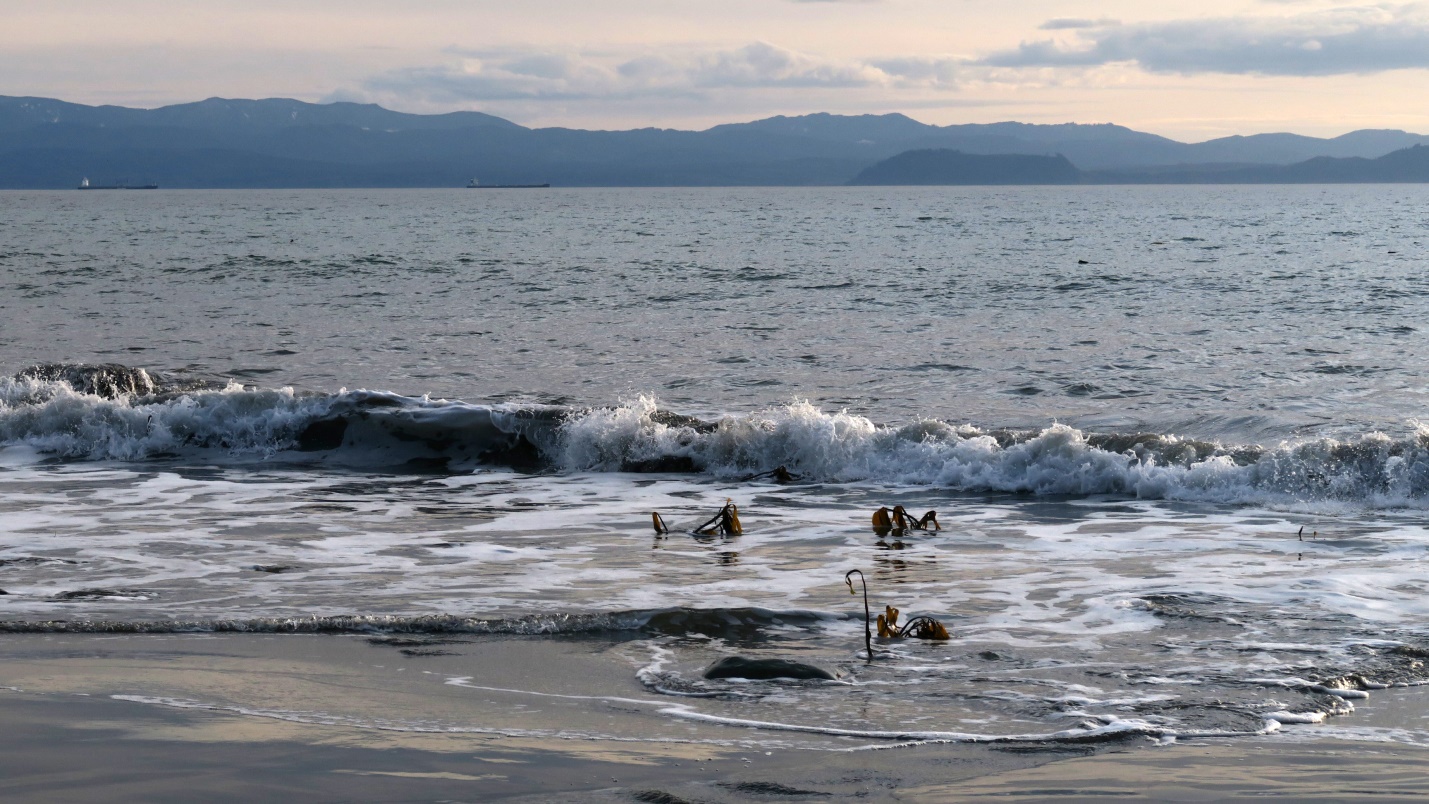
Figure 5: Walking Kelp is viewed here ‘enjoying’ the surf at French Beach – will this be their ‘final surf’ as they are lifted ever closer inshore and out of their subtidal habitat? French Beach, Juan de Fuca Strait, B.C., Canada. March 8, 2021. Photo ID 27533 ©Seaweedwhisperings.com
Biology & Natural History Information:
Description:
Thallus of this brown alga consist of a stiff, woody stipe 1.5 to 2 meters long that is terminated by a relatively small vegetative blade with an inconspicuous midrib. This oblong blade, 6 to 10 cm wide and up to 60 cm long, grows at the tip of the stipe. The upper reaches of the flattened stipe support two rows (usually 5 to 10 pairs) of bladelike sporophylls (spore-bearing blades) attached along the margins; these blades have no midribs. This tough kelp can reach 2.3 meters in total height. The holdfast consists of branched haptera that is somewhat conical in shape and grows in size to match the needs of this long-lived perennial’s overall size. The blade and sporophylls usually disintegrate during the winter and new ones are produced in the spring.
Habitat:
On rock, or cobble in the subtidal zone, usually between depths of 7 to 20 meters below sea level (but sometimes as shallow as 2 meters). It favors surf-swept or high current locations of more exposed coasts. This kelp can form dense stands.
Distribution:
Kodiak Island, Alaska, to Baja California, Mexico.
Remarks:
Old-growth Kelp has been known to live to 25 years of age with new blades growing each year; it is one of the longest-living kelps. The age can be calculated by counting growth rings of its woody stipe. This species has the often observed habit of “walking” along the ocean bottom in strong surf; when the plant reaches a critical size, the “sail” or sweep of the sporophylls and blade is sufficient to bounce or walk the whole kelp and its attached cobble along the bottom.
The stipe of this kelp is indeed woody and can be mistaken for driftwood when washed ashore however it does not make good firewood. Bald Eagles collect Walking-Kelp stipes to construct their large nests; such nests are used year after year and so the building materials must be enduring.
“Pterygophora” is from the Greek meaning “bearing wings”; this refers to the double row of sporophylls near the tip of the stipe.
Classification:
Phylum: Ochrophyta
Class: Phaeophyceae
Order: Laminariales
Family: Alariaceae
Genus: Pterygophora
Species: Pterygophora californica Ruprecht 1852
Former name(s): This is the type species (holotype) of the genus Pterygophora. There have been no previous names for this species.
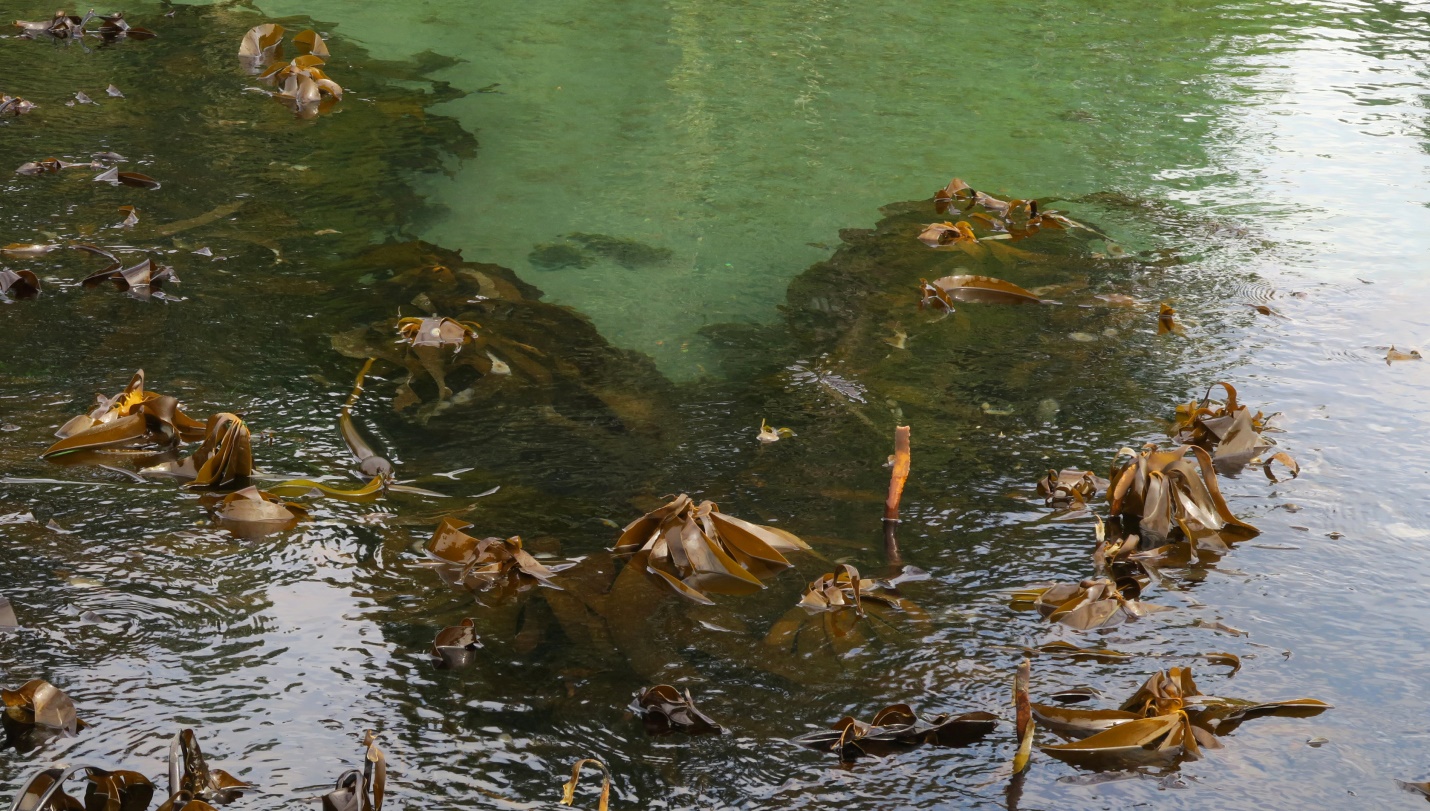
Figure 6: Some of the blades are above the waterline at this low tide, and most of the biomass visible beneath is all Pterygophora californica blades, sporophylls and stipes. The ‘naked’ stipes with broken away sporophylls and blades do look reminiscent of a periscope. Fishboat Bay, Juan de Fuca Strait, B.C., Canada. July 6, 2020.
Photo ID 27534 ©Seaweedwhisperings.com
![]()